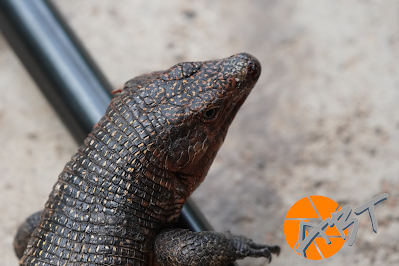Giant Plated Lizard #ReptileMonday
Giant plated lizard(English), reusepantserakkedis (Afrikaans), uxamu (isiZulu), chamu (siSwati)
The giant plated lizard is the second largest lizard species found in South Africa, after the monitor lizard, and they are known to attain a body length of approximately 690 mm. Giant plated lizards are rupicolous, which means that they live among rocky outcrops, mostly on the upper slopes of granite hills. Giant plated lizards are shy and hard to approach – an individual will often retreat into rock crevices at the slightest disturbance and inflate its body, effectively wedging itself into the crevice and making it very difficult for anything to dislodge it.
They occur in most southern African countries including Angola, Botswana, Malawi, Mozambique, Namibia, South Africa, Swaziland, Zimbabwe and Zambia. They are widespread and generally common in their natural range and no conservation actions are recommended.
Giant plated lizards have strongly muscled legs and are able to move easily on rock faces where they are primarily found. They move slowly when foraging for food, scraping away loose soil or leaf litter looking for hidden prey. The giant plated lizard has an omnivorous diet of leaves, flowers and fruits, as well as insects, spiders, millipedes, scorpions and the occasional small lizards and baby tortoises.
Giant plated lizards are preyed upon by snakes, some mammals and certain birds of prey. When in danger the lizard will slip into the nearest rock cavity or crevice and inflate its body, effectively wedging itself into the crevice or cavity and making it very hard for anything to dislodge it. They have small, black, rubbery balls on the soles of their feet, which help them to cling to rocks.




Comments
Post a Comment